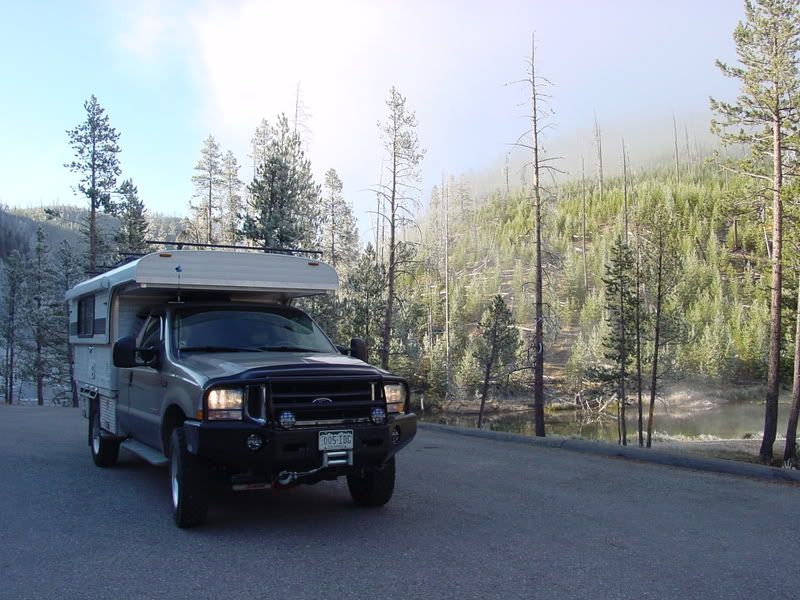Carlyle
Explorer
Capt Eddie, sorry about the slow response but this is the first internet connection after spending the last week in Yellowstone. Airbags make a huge difference in the ride of your vehicle and when you purchased your Lance should have been one of the first things to put on your vehicle. I upgraded shocks as well, but by far the airbags make the greatest difference. We're running Firestone's.
Spence, glad you enjoyed the build and the wife and I keep tabs on the cost of the build all along the way. She does roll her eyes at times when I want a new toy, but she does come around when it proves its use. Anything you want to know just let me know.
After a week in Yellowstone of running with intermittent sun we started to use the generator and were only able to pull three amps out of it before it bogged down and stalled. The Yamaha 1000 is rated for 8 amps, so I wonder if I need to connect dc to dc and go directly to the batteries? The Outback system can take in as much as 30 amps when plugged in, but the generator supplies little power at this time.


Spence, glad you enjoyed the build and the wife and I keep tabs on the cost of the build all along the way. She does roll her eyes at times when I want a new toy, but she does come around when it proves its use. Anything you want to know just let me know.
After a week in Yellowstone of running with intermittent sun we started to use the generator and were only able to pull three amps out of it before it bogged down and stalled. The Yamaha 1000 is rated for 8 amps, so I wonder if I need to connect dc to dc and go directly to the batteries? The Outback system can take in as much as 30 amps when plugged in, but the generator supplies little power at this time.











